Jintao Ke
Michael
Dynamic Adjustment of Matching Radii under the Broadcasting Mode: A Novel Multitask Learning Strategy and Temporal Modeling Approach
Dec 09, 2023Abstract:As ride-hailing services have experienced significant growth, the majority of research has concentrated on the dispatching mode, where drivers must adhere to the platform's assigned routes. However, the broadcasting mode, in which drivers can freely choose their preferred orders from those broadcast by the platform, has received less attention. One important but challenging task in such a system is the determination of the optimal matching radius, which usually varies across space, time, and real-time supply/demand characteristics. This study develops a Transformer-Encoder-Based (TEB) model that predicts key system performance metrics for a range of matching radii, which enables the ride-hailing platform to select an optimal matching radius that maximizes overall system performance according to real-time supply and demand information. To simultaneously maximize multiple system performance metrics for matching radius determination, we devise a novel multi-task learning algorithm that enhances convergence speed of each task (corresponding to the optimization of one metric) and delivers more accurate overall predictions. We evaluate our methods in a simulation environment specifically designed for broadcasting-mode-based ride-hailing service. Our findings reveal that dynamically adjusting matching radii based on our proposed predict-then-optimize approach significantly improves system performance, e.g., increasing platform revenue by 7.55% and enhancing order fulfillment rate by 13% compared to benchmark algorithms.
A multi-functional simulation platform for on-demand ride service operations
Mar 22, 2023Abstract:On-demand ride services or ride-sourcing services have been experiencing fast development in the past decade. Various mathematical models and optimization algorithms have been developed to help ride-sourcing platforms design operational strategies with higher efficiency. However, due to cost and reliability issues (implementing an immature algorithm for real operations may result in system turbulence), it is commonly infeasible to validate these models and train/test these optimization algorithms within real-world ride sourcing platforms. Acting as a useful test bed, a simulation platform for ride-sourcing systems will be very important to conduct algorithm training/testing or model validation through trails and errors. While previous studies have established a variety of simulators for their own tasks, it lacks a fair and public platform for comparing the models or algorithms proposed by different researchers. In addition, the existing simulators still face many challenges, ranging from their closeness to real environments of ride-sourcing systems, to the completeness of different tasks they can implement. To address the challenges, we propose a novel multi-functional and open-sourced simulation platform for ride-sourcing systems, which can simulate the behaviors and movements of various agents on a real transportation network. It provides a few accessible portals for users to train and test various optimization algorithms, especially reinforcement learning algorithms, for a variety of tasks, including on-demand matching, idle vehicle repositioning, and dynamic pricing. In addition, it can be used to test how well the theoretical models approximate the simulated outcomes. Evaluated on real-world data based experiments, the simulator is demonstrated to be an efficient and effective test bed for various tasks related to on-demand ride service operations.
Joint predictions of multi-modal ride-hailing demands: a deep multi-task multigraph learning-based approach
Nov 11, 2020



Abstract:Ride-hailing platforms generally provide various service options to customers, such as solo ride services, shared ride services, etc. It is generally expected that demands for different service modes are correlated, and the prediction of demand for one service mode can benefit from historical observations of demands for other service modes. Moreover, an accurate joint prediction of demands for multiple service modes can help the platforms better allocate and dispatch vehicle resources. Although there is a large stream of literature on ride-hailing demand predictions for one specific service mode, little efforts have been paid towards joint predictions of ride-hailing demands for multiple service modes. To address this issue, we propose a deep multi-task multi-graph learning approach, which combines two components: (1) multiple multi-graph convolutional (MGC) networks for predicting demands for different service modes, and (2) multi-task learning modules that enable knowledge sharing across multiple MGC networks. More specifically, two multi-task learning structures are established. The first one is the regularized cross-task learning, which builds cross-task connections among the inputs and outputs of multiple MGC networks. The second one is the multi-linear relationship learning, which imposes a prior tensor normal distribution on the weights of various MGC networks. Although there are no concrete bridges between different MGC networks, the weights of these networks are constrained by each other and subject to a common prior distribution. Evaluated with the for-hire-vehicle datasets in Manhattan, we show that our propose approach outperforms the benchmark algorithms in prediction accuracy for different ride-hailing modes.
Predicting origin-destination ride-sourcing demand with a spatio-temporal encoder-decoder residual multi-graph convolutional network
Oct 17, 2019



Abstract:With the rapid development of mobile-internet technologies, on-demand ride-sourcing services have become increasingly popular and largely reshaped the way people travel. Demand prediction is one of the most fundamental components in supply-demand management systems of ride-sourcing platforms. With accurate short-term prediction for origin-destination (OD) demand, the platforms make precise and timely decisions on real-time matching, idle vehicle reallocations and ride-sharing vehicle routing, etc. Compared to zone-based demand prediction that has been examined by many previous studies, OD-based demand prediction is more challenging. This is mainly due to the complicated spatial and temporal dependencies among demand of different OD pairs. To overcome this challenge, we propose the Spatio-Temporal Encoder-Decoder Residual Multi-Graph Convolutional network (ST-ED-RMGC), a novel deep learning model for predicting ride-sourcing demand of various OD pairs. Firstly, the model constructs OD graphs, which utilize adjacent matrices to characterize the non-Euclidean pair-wise geographical and semantic correlations among different OD pairs. Secondly, based on the constructed graphs, a residual multi-graph convolutional (RMGC) network is designed to encode the contextual-aware spatial dependencies, and a long-short term memory (LSTM) network is used to encode the temporal dependencies, into a dense vector space. Finally, we reuse the RMGC networks to decode the compressed vector back to OD graphs and predict the future OD demand. Through extensive experiments on the for-hire-vehicles datasets in Manhattan, New York City, we show that our proposed deep learning framework outperforms the state-of-arts by a significant margin.
Deep Multi-View Spatial-Temporal Network for Taxi Demand Prediction
Feb 27, 2018



Abstract:Taxi demand prediction is an important building block to enabling intelligent transportation systems in a smart city. An accurate prediction model can help the city pre-allocate resources to meet travel demand and to reduce empty taxis on streets which waste energy and worsen the traffic congestion. With the increasing popularity of taxi requesting services such as Uber and Didi Chuxing (in China), we are able to collect large-scale taxi demand data continuously. How to utilize such big data to improve the demand prediction is an interesting and critical real-world problem. Traditional demand prediction methods mostly rely on time series forecasting techniques, which fail to model the complex non-linear spatial and temporal relations. Recent advances in deep learning have shown superior performance on traditionally challenging tasks such as image classification by learning the complex features and correlations from large-scale data. This breakthrough has inspired researchers to explore deep learning techniques on traffic prediction problems. However, existing methods on traffic prediction have only considered spatial relation (e.g., using CNN) or temporal relation (e.g., using LSTM) independently. We propose a Deep Multi-View Spatial-Temporal Network (DMVST-Net) framework to model both spatial and temporal relations. Specifically, our proposed model consists of three views: temporal view (modeling correlations between future demand values with near time points via LSTM), spatial view (modeling local spatial correlation via local CNN), and semantic view (modeling correlations among regions sharing similar temporal patterns). Experiments on large-scale real taxi demand data demonstrate effectiveness of our approach over state-of-the-art methods.
PCA-Based Missing Information Imputation for Real-Time Crash Likelihood Prediction Under Imbalanced Data
Feb 11, 2018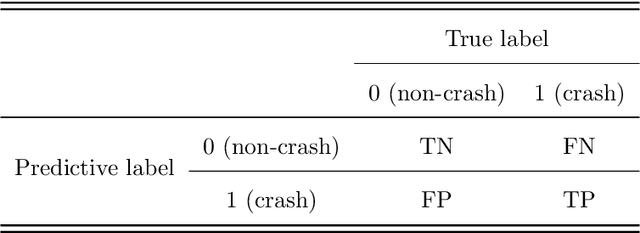

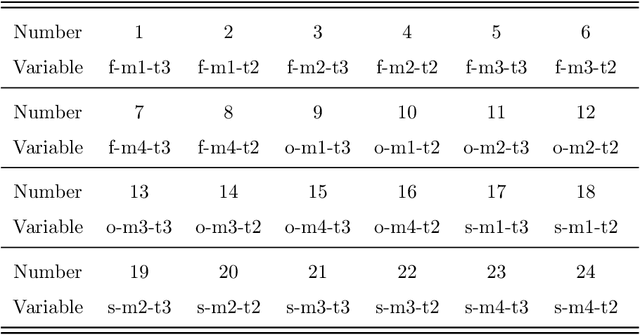
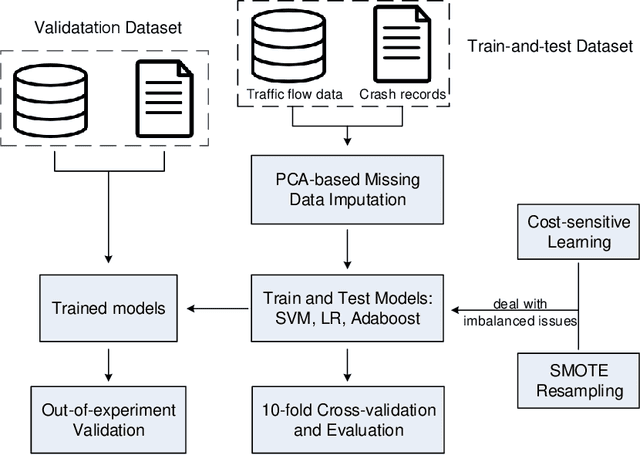
Abstract:The real-time crash likelihood prediction has been an important research topic. Various classifiers, such as support vector machine (SVM) and tree-based boosting algorithms, have been proposed in traffic safety studies. However, few research focuses on the missing data imputation in real-time crash likelihood prediction, although missing values are commonly observed due to breakdown of sensors or external interference. Besides, classifying imbalanced data is also a difficult problem in real-time crash likelihood prediction, since it is hard to distinguish crash-prone cases from non-crash cases which compose the majority of the observed samples. In this paper, principal component analysis (PCA) based approaches, including LS-PCA, PPCA, and VBPCA, are employed for imputing missing values, while two kinds of solutions are developed to solve the problem in imbalanced data. The results show that PPCA and VBPCA not only outperform LS-PCA and other imputation methods (including mean imputation and k-means clustering imputation), in terms of the root mean square error (RMSE), but also help the classifiers achieve better predictive performance. The two solutions, i.e., cost-sensitive learning and synthetic minority oversampling technique (SMOTE), help improve the sensitivity by adjusting the classifiers to pay more attention to the minority class.
Short-Term Forecasting of Passenger Demand under On-Demand Ride Services: A Spatio-Temporal Deep Learning Approach
Jun 20, 2017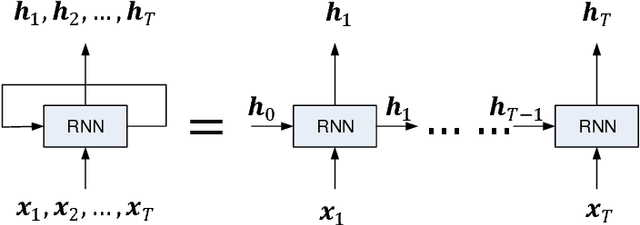
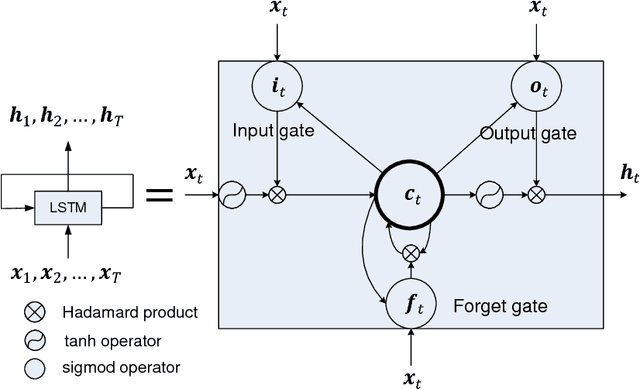
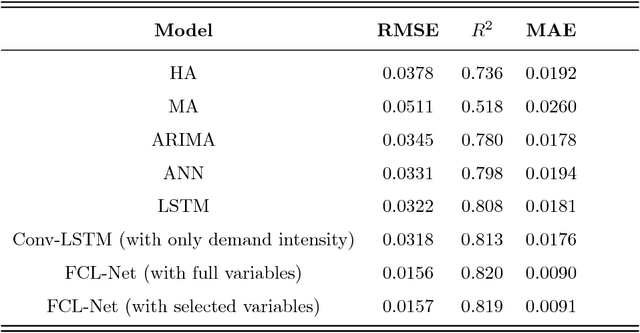

Abstract:Short-term passenger demand forecasting is of great importance to the on-demand ride service platform, which can incentivize vacant cars moving from over-supply regions to over-demand regions. The spatial dependences, temporal dependences, and exogenous dependences need to be considered simultaneously, however, which makes short-term passenger demand forecasting challenging. We propose a novel deep learning (DL) approach, named the fusion convolutional long short-term memory network (FCL-Net), to address these three dependences within one end-to-end learning architecture. The model is stacked and fused by multiple convolutional long short-term memory (LSTM) layers, standard LSTM layers, and convolutional layers. The fusion of convolutional techniques and the LSTM network enables the proposed DL approach to better capture the spatio-temporal characteristics and correlations of explanatory variables. A tailored spatially aggregated random forest is employed to rank the importance of the explanatory variables. The ranking is then used for feature selection. The proposed DL approach is applied to the short-term forecasting of passenger demand under an on-demand ride service platform in Hangzhou, China. Experimental results, validated on real-world data provided by DiDi Chuxing, show that the FCL-Net achieves better predictive performance than traditional approaches including both classical time-series prediction models and neural network based algorithms (e.g., artificial neural network and LSTM). This paper is one of the first DL studies to forecast the short-term passenger demand of an on-demand ride service platform by examining the spatio-temporal correlations.
* 39 pages, 10 figures
Ridesourcing Car Detection by Transfer Learning
May 23, 2017
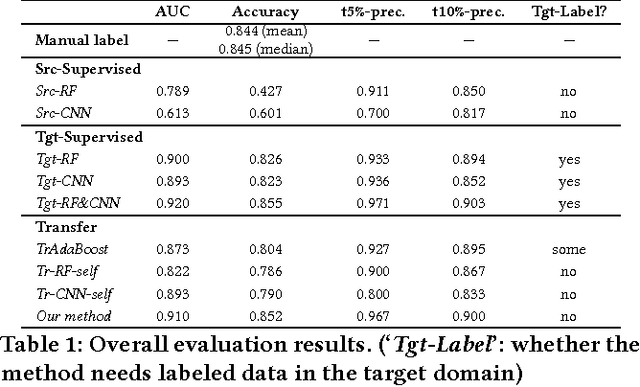
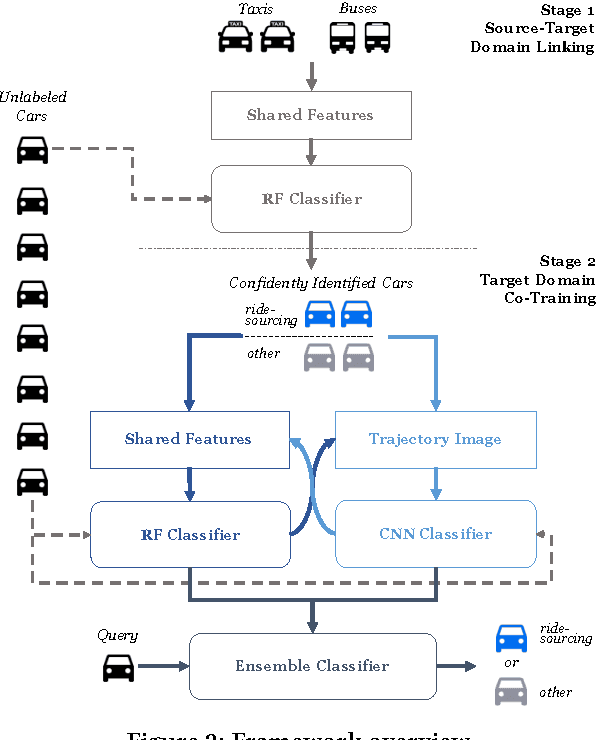
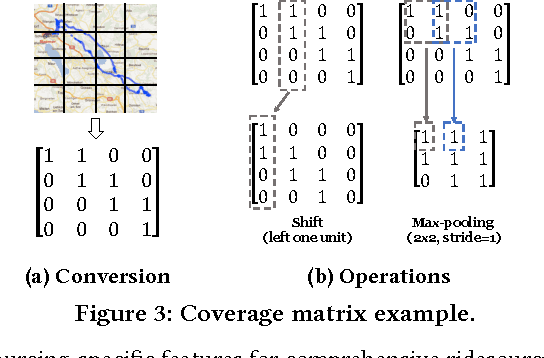
Abstract:Ridesourcing platforms like Uber and Didi are getting more and more popular around the world. However, unauthorized ridesourcing activities taking advantages of the sharing economy can greatly impair the healthy development of this emerging industry. As the first step to regulate on-demand ride services and eliminate black market, we design a method to detect ridesourcing cars from a pool of cars based on their trajectories. Since licensed ridesourcing car traces are not openly available and may be completely missing in some cities due to legal issues, we turn to transferring knowledge from public transport open data, i.e, taxis and buses, to ridesourcing detection among ordinary vehicles. We propose a two-stage transfer learning framework. In Stage 1, we take taxi and bus data as input to learn a random forest (RF) classifier using trajectory features shared by taxis/buses and ridesourcing/other cars. Then, we use the RF to label all the candidate cars. In Stage 2, leveraging the subset of high confident labels from the previous stage as input, we further learn a convolutional neural network (CNN) classifier for ridesourcing detection, and iteratively refine RF and CNN, as well as the feature set, via a co-training process. Finally, we use the resulting ensemble of RF and CNN to identify the ridesourcing cars in the candidate pool. Experiments on real car, taxi and bus traces show that our transfer learning framework, with no need of a pre-labeled ridesourcing dataset, can achieve similar accuracy as the supervised learning methods.
 Add to Chrome
Add to Chrome Add to Firefox
Add to Firefox Add to Edge
Add to Edge